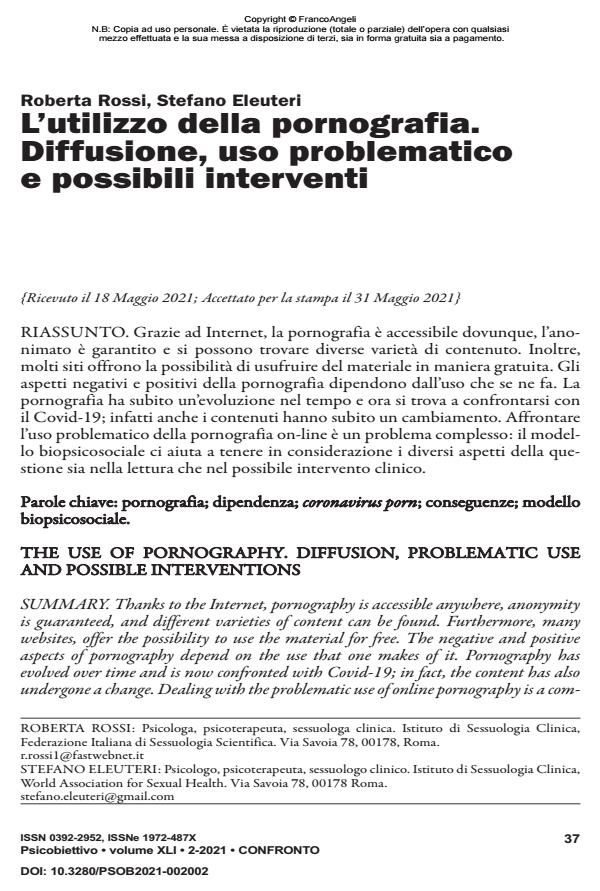L’utilizzo della pornografia. Diffusione, uso problematico e possibili interventi
Titolo Rivista PSICOBIETTIVO
Autori/Curatori Roberta Rossi, Stefano Eleuteri
Anno di pubblicazione 2021 Fascicolo 2021/2
Lingua Italiano Numero pagine 15 P. 37-51 Dimensione file 142 KB
DOI 10.3280/PSOB2021-002002
Il DOI è il codice a barre della proprietà intellettuale: per saperne di più
clicca qui
Qui sotto puoi vedere in anteprima la prima pagina di questo articolo.
Se questo articolo ti interessa, lo puoi acquistare (e scaricare in formato pdf) seguendo le facili indicazioni per acquistare il download credit. Acquista Download Credits per scaricare questo Articolo in formato PDF

FrancoAngeli è membro della Publishers International Linking Association, Inc (PILA)associazione indipendente e non profit per facilitare (attraverso i servizi tecnologici implementati da CrossRef.org) l’accesso degli studiosi ai contenuti digitali nelle pubblicazioni professionali e scientifiche
Grazie ad Internet, la pornografia è accessibile dovunque, l’anonimato è garantito e si possono trovare diverse varietà di contenuto. Inoltre, molti siti offrono la possibilità di usufruire del materiale in maniera gratuita. Gli aspetti negativi e positivi della pornografia dipendono dall’uso che se ne fa. La pornografia ha subito un’evoluzione nel tempo e ora si trova a confrontarsi con il Covid-19; infatti anche i contenuti hanno subito un cambiamento. Affrontare l’uso problematico della pornografia on-line è un problema complesso: il modello biopsicosociale ci aiuta a tenere in considerazione i diversi aspetti della questione sia nella lettura che nel possibile intervento clinico.
Parole chiave:pornografia; dipendenza; coronavirus porn; conseguenze; modello biopsicosociale.
Roberta Rossi, Stefano Eleuteri, L’utilizzo della pornografia. Diffusione, uso problematico e possibili interventi in "PSICOBIETTIVO" 2/2021, pp 37-51, DOI: 10.3280/PSOB2021-002002